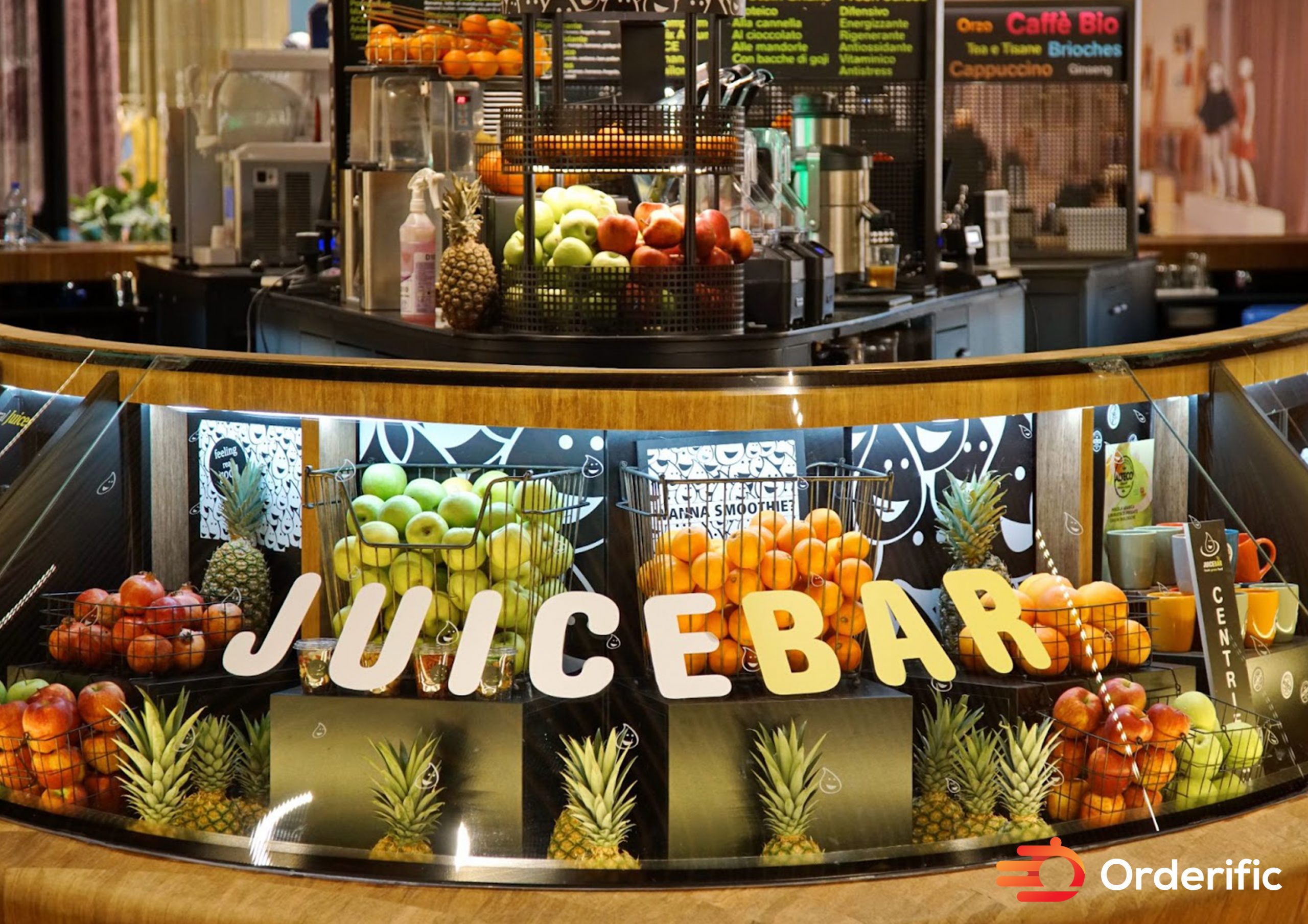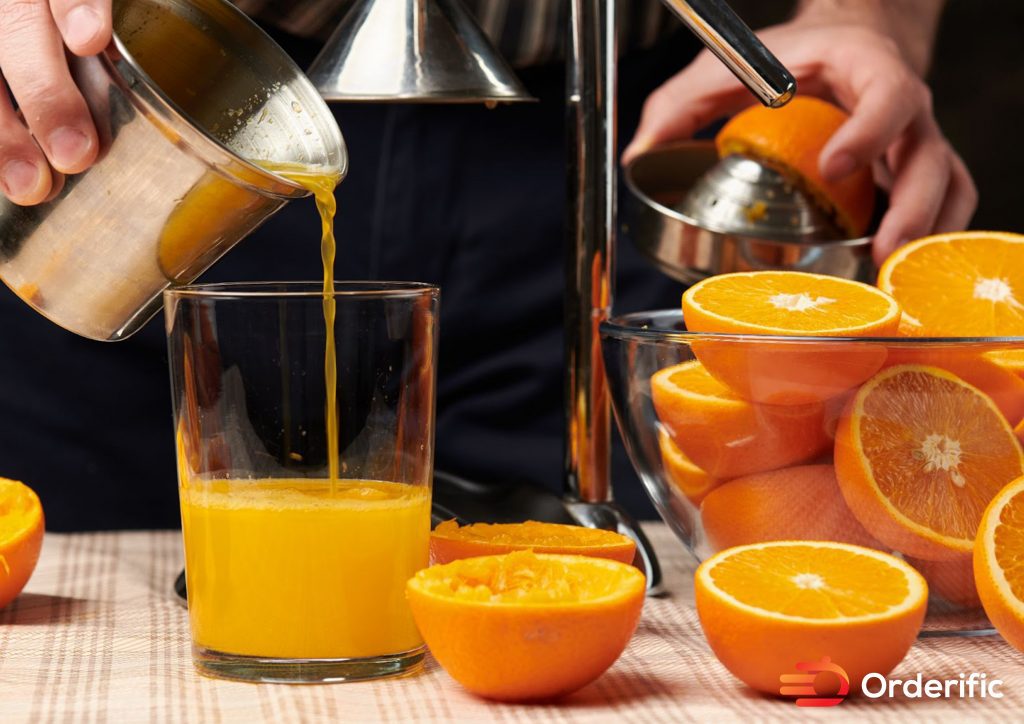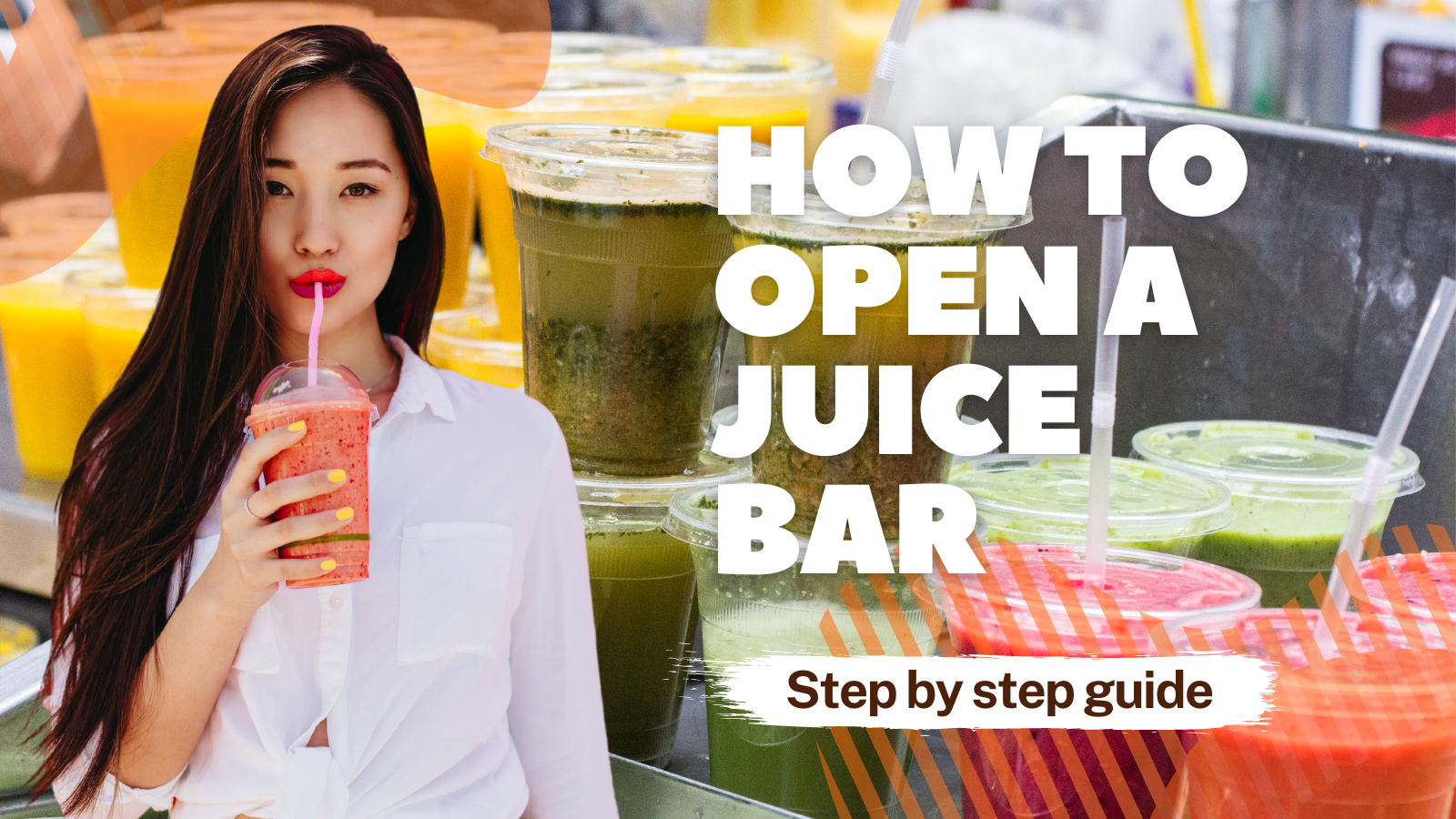With more individuals turning to healthier options for their dietary needs, fresh juice bars like Juice Press have become a popular choice. Juice Press, a leading name in the industry, prides itself on offering organic, high-quality juices and smoothies. Their enticing range of products also extends to delectable salads and bowls, catering to various health-conscious consumers. But what does it take to start a juice bar like Juice Press? Let’s explore!
How To Start a Juice Business from Home
Starting a juice business from home is not as daunting as it sounds. Initially, a solid business plan detailing the target market, competitive analysis, and financial projections is required. Next, invest in high-quality juicers and blenders to ensure a smooth operation.
Cold press juicers are particularly essential for providing nutrient-rich juices. Additionally, you would need fresh fruits and vegetables, preferably organic, as they are the star ingredients in your business. Don’t forget the importance of obtaining necessary permits and certifications to maintain health standards.
How Much To Charge for Juice – Pricing Juice Bar Items
Navigating the realm of pricing for a juice press bar can be a challenging task. It’s a delicate balance between ensuring profitability and offering competitive prices that attract customers. Your pricing strategy should not only cover costs but also contribute to your business’s overall success.
Factors To Consider When Pricing Juice
Several factors come into play when determining how much to charge for juice at your juice bar. It’s not merely a process of marking up the costs; it’s an intricate blend of understanding your business, market, and customers.
- Cost of Goods: The starting point is to understand the total cost involved in making the juice. This includes the cost of fruits, vegetables, and any other ingredients, as well as packaging materials like bottles or cups, lids, straws, etc.
- Operational Costs: Factor in overhead costs like rent, utilities, wages, marketing, and other expenses associated with running the juice press bar.
- Market Rates: Research what your competitors are charging for similar products. While you don’t have to mirror these prices, they can give you a baseline.
- Customer Willingness: Understand what your customers are willing to pay. This often involves some trial and error and may require you to adjust prices over time.
- Profit Margin: Decide on a profit margin that ensures profitability while still offering reasonable prices. A common practice in the food industry is a markup of three times the cost of goods, but this can vary based on factors such as location, brand positioning, and target demographic.
Pricing Strategies for Juice Bars
Having considered the factors above, you can employ various pricing strategies for your juice bar:
- Cost-Plus Pricing: This strategy involves adding a set profit margin to your total cost per item. It ensures all costs are covered, and a profit is made with each sale.
- Competitive Pricing: With this strategy, your prices are set based on what competitors are charging. If your juices offer more value (e.g., organic, fresh, unique recipes), you might be able to price slightly higher.
- Value-Based Pricing: This strategy focuses on the perceived value of your juices to the customers. If customers see your juices as high-quality, nutritious options that justify a higher price, they’ll be willing to pay more.
- Tiered Pricing: Offering juices at different price points can attract a wider range of customers. You could have a range of simple, low-cost juices, alongside more complex, premium-priced options.
Juice Bar Menu Ideas & 5 Tips for Creating Your Own
Here are a few creative and classic ideas to include in your juice bar menu:
- Classic Combos: Freshly squeezed orange juice, apple and carrot blends, or beetroot and ginger shots. These are well-loved classics that appeal to a broad range of customers.
- Green Juices: Combine leafy greens like kale, spinach, or wheatgrass with sweet fruits like apple or pineapple for a nutrient-packed green juice.
- Superfood Boosts: Offer juices featuring superfoods like turmeric, ginger, or acai berries, which are rich in nutrients and antioxidants.
- Exotic Blends: Surprise your customers with unique flavor combinations, such as pomegranate and lychee, cucumber and mint, or even a spicy pineapple and jalapeno blend.
- Smoothies and Shakes: Add thickness and variety to your menu with fruit or yogurt-based smoothies and protein shakes.
- Seasonal Specials: Take advantage of seasonal fruits and vegetables to offer limited-time specials. This can create excitement and variety in your offerings.
Tips for Creating Your Own Juice Bar Menu
- Understand Your Customers: Who are your customers, and what do they want? Are they health-conscious individuals looking for a green juice cleanse, or are they seeking a refreshing treat on a hot day? Understanding your customers can guide you in crafting a menu that suits their tastes and needs.
- Use Appealing Descriptions: Don’t just list the ingredients. Use appealing, vibrant language to describe each drink. This can create a visual image in the customer’s mind and make your juices sound even more enticing.
- Keep it Simple: While it’s great to offer a variety of juices, having too many options can overwhelm customers. Stick to a carefully curated list of your best juices and keep your menu simple and easy to navigate.
- Consider the Visuals: People eat (and drink) with their eyes first. Incorporate colorful pictures of your offerings, and consider the layout and design of your menu. It should reflect the style and atmosphere of your juice bar.
- Test and Adjust: Don’t be afraid to adjust your menu based on customer feedback and sales. What juices are the most popular? What isn’t selling? Use this information to refine your menu and keep it fresh and appealing.
How to Increase Juice Bar Profit in 2023 (5 Tricks)
In the competitive juice bar industry, businesses need to stay innovative to increase profits. Offering loyalty programs, introducing seasonal flavors, partnering with local fitness centers, providing online ordering options, and organizing health and wellness events can attract more customers and boost sales.
Juice Bar Marketplace Launch
Launching a juice bar in today’s marketplace requires careful planning and execution. A grand opening event with promotional offers, free samples, and interactive activities can create a buzz. Collaboration with local influencers and using social media for promotion will also help in attracting more customers.
5 Must-Read Juicing Tips & Recipes for Beginners
Juicing can be a wonderful way to pack more fruits and vegetables into your diet, providing your body with essential nutrients in an easy-to-consume format. Whether you’re interested in juicing for its health benefits, or simply because you love the taste of fresh juice, here are five must-read tips and recipes to help beginners embark on their juicing journey.
01. Invest in a Quality Juicer
The first step to successful juicing is having the right equipment. While there are plenty of cheap juicers on the market, investing in a quality machine can make a significant difference in the quantity and quality of juice you produce, as well as the machine’s longevity.
02. Use Fresh Produce
For the best tasting and most nutritious juice, always use fresh fruits and vegetables. Produce that is overripe or starting to spoil will result in a juice that tastes less than optimal and may have reduced nutritional content.
03. Balance Your Ingredients
A common mistake for juicing beginners is using too much of one type of fruit or vegetable, which can lead to a juice that is overly sweet or bitter. Balance your ingredients by combining sweet fruits like apples or pineapples with more bitter vegetables like kale or spinach.
04. Experiment With Flavors
One of the great things about juicing is that there are no hard and fast rules when it comes to flavors. Feel free to experiment with different combinations of fruits and vegetables to find what you enjoy most. You might surprise yourself with the unique and delicious combinations you come up with!
05. Clean Your Juicer Promptly
To maintain your juicer and ensure its longevity, it’s important to clean it promptly after each use. Leftover pulp can quickly dry and stick to the components, making it difficult to remove later and potentially causing damage to your juicer.
Recipes for Beginners
Here are two simple, beginner-friendly recipes to get you started:
Green Goddess Juice
- 2 green apples
- 3 stalks of celery (without leaves)
- 1 cucumber
- 8 leaves of kale
- 1/2 lemon (peeled)
- 1 piece of fresh ginger
Simply wash and prepare your produce, then run it through your juicer. Enjoy the crisp, refreshing taste of this nutrient-packed green juice!
Sunrise Blend
- 2 oranges (peeled)
- 4 carrots
- 1 small beetroot
- 1 piece of fresh ginger
Prepare your ingredients and put them through your juicer. The result is a beautifully colored, sweet, and earthy juice that’s a perfect way to start the day.
What Is Cold-Pressed Juice & Is It Really Better?
Cold-pressed juice is made using a hydraulic press that extracts the maximum amount of juice from fresh fruits and vegetables. As no heat is used in the process, the juice retains more nutrients and enzymes, making it a healthier option.
How To Juice Fast Safely: 9 Tips for Success
A juice fast, or juice cleanse, can be a great way to reset your body, kickstart a healthier eating pattern, or simply give your digestive system a break. However, like any dietary change, it’s important to approach a juice fast safely and sensibly. Here are nine tips to ensure your juice fast is a success.
1. Consult a Healthcare Professional
Before starting a juice press fast, it’s important to consult with a healthcare professional, particularly if you have any underlying health conditions, are pregnant or breastfeeding, or are on any medication. A juice fast can affect your body in unexpected ways, so it’s crucial to get professional advice first.
2. Plan Your Fast
Decide how long you want your juice fast to last. For beginners, a one to three-day cleanse can be a good start. However, some people do longer cleanses, up to seven days or more. It’s important to listen to your body and not to push yourself too hard.
3. Stay Hydrated
Drinking plenty of water during a juice fast is essential to help your body process the nutrients from the juices effectively and to prevent dehydration.
4. Use a Variety of Fruits and Vegetables
To ensure you’re getting a range of nutrients during your juice fast, use a variety of fruits and vegetables in your juices. Try to include a mix of leafy greens, citrus fruits, berries, root vegetables, and herbs.
5. Include Protein and Fat
While fruits and vegetables are the mainstays of a juice fast, including some sources of protein and healthy fats can help keep you feeling satisfied and prevent blood sugar spikes. Consider adding ingredients like Greek yogurt, almond milk, avocados, or chia seeds to your juices.
6. Listen to Your Body
During a juice fast, it’s important to listen to your body and respond to its needs. If you’re feeling excessively hungry, dizzy, or weak, it might be a sign that your body needs more sustenance.
7. Break the Fast Carefully
How you end a juice fast is just as important as the fast itself. Start by gradually reintroducing solid foods to your diet, beginning with fruits and vegetables, then slowly adding in proteins and whole grains.
8. Keep Active
While strenuous exercise might not be recommended during a juice fast, light activities like walking, yoga, or stretching can be beneficial and help to boost your mood and energy levels.
9. Use the Fast as a Starting Point
Finally, view your juice fast as a starting point for a healthier lifestyle, rather than a quick fix.
3-Day DIY Juice Cleanse (Recipes, Benefits & Tips)
A 3-day DIY juice cleanse can be a refreshing reset for your body. Ensure your plan encompasses a delightful assortment of fruits, vegetables, and the goodness of protein-rich nut milk. Hydration is key, so be sure to drink an ample amount of water. Kickstart your cleanse by gradually transitioning to lighter meals a few days beforehand. Lastly, reintroduce yourself to your usual diet at a comfortable pace after completing the cleanse.
The 10 Best Vegetables for Juicing
In the realm of juicing, various vegetables possess distinct qualities. Optimal choices encompass kale, spinach, beets, carrots, cucumber, celery, bell pepper, wheatgrass, ginger, and turmeric.
Conclusion
Embarking on the journey of opening a juice bar, such as Juice Press, demands a genuine zeal for well-being and an astute comprehension of the industry. It also necessitates the capacity to consistently serve delectable, top-notch products. If you adopt a strategic approach, you have the potential to establish a thriving juice bar that will undoubtedly captivate patrons!
In case you want more content like this, visit Orderific right now!
FAQs
1. Which is the tastiest natural fruit juice?
Flavor preferences are subjective and can differ among individuals. Nonetheless, orange juice, apple juice, and grape juice are widely adored.
2. Are fruit juices actually healthier than soda?
Indeed, natural fruit juices surpass soda in terms of their health benefits attributed to the presence of essential vitamins, minerals, and antioxidants.
3. What are efficient smoothies/juice for anemia?
Smoothies or juices rich in vitamin C and iron can help with anemia. Try combinations like orange and spinach or strawberry and beetroot.
4. Can I prepare green juices the night before?
Absolutely! Green juices can indeed be prepared in advance, but for optimal nutrient content, consuming them fresh is highly recommended.
5. Which vegetables are best for juicing?
Spinach, kale, celery, cucumber, beets, and carrots are fantastic choices for juicing. These veggies possess a generous water content and an abundant array of nutrients.













